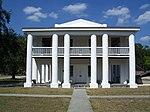Episcopal Diocese of Southwest Florida

The Episcopal Diocese of Southwest Florida is a diocese of the Episcopal Church in the United States of America (ECUSA) in Florida which extends from Marco Island on the south, to Brooksville on the north, and inland to Plant City, Arcadia and LaBelle on the east. As part of the ECUSA, the diocese is a constituent member of the worldwide Anglican Communion. Major cities in the diocese are Tampa, St. Petersburg, Clearwater, Fort Myers, Sarasota, and Bradenton. The diocese includes the western half of Hendry County, the mainland portion of Monroe County, and all of the counties of Hernando, Pasco, Pinellas, Hillsborough, Manatee, Sarasota, DeSoto, Charlotte, Lee, and Collier. The diocese is a part of Province IV of the Episcopal Church, historically known as the Province of Sewanee. The current Diocesan Bishop of Southwest Florida is Douglas Scharf. The cathedral church of the diocese is Cathedral Church of St. Peter in St. Petersburg. The diocesan offices are in Parrish, Florida on the campus of the DaySpring Episcopal Center. The diocese currently comprises 78 churches.
Excerpt from the Wikipedia article Episcopal Diocese of Southwest Florida (License: CC BY-SA 3.0, Authors, Images).Episcopal Diocese of Southwest Florida
25th Street East,
Geographical coordinates (GPS) Address Nearby Places Show on map
Geographical coordinates (GPS)
| Latitude | Longitude |
|---|---|
| N 27.5351 ° | E -82.4819 ° |
Address
25th Street East 8101
34219
Florida, United States
Open on Google Maps


